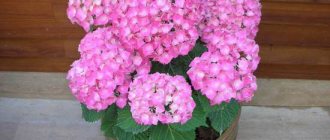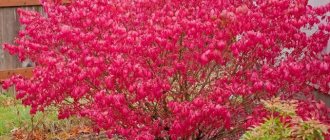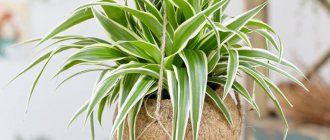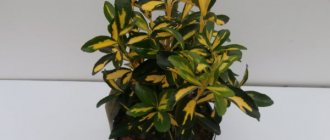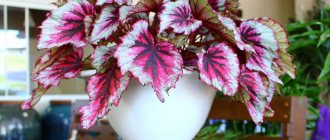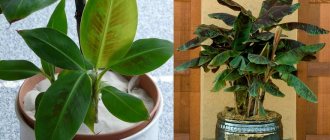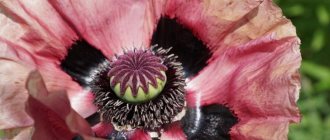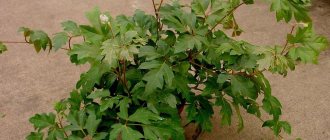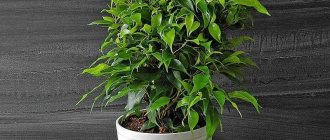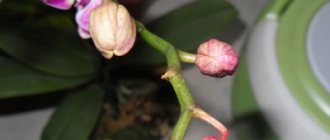What is euonymus and what does it look like?
The Euonymus family has 100 genera. One of them - euonymus (euonymus) - is represented by deciduous or evergreen trees and shrubs. Wild representatives of the crop can be found in mixed and deciduous forests. Through selection, hybrid varieties have been obtained that are actively used in horticulture.
Euonymus in a hedge
Euonymus shoots are round or tetrahedral. Sometimes they have corky growths on the branches. The leaves are located opposite on the shoots. In autumn, the color of green foliage in many types of crops changes to crimson-red. The flowers of the plant are inconspicuous, collected in a raceme or corymb inflorescence. 4-5 greenish or brown petals are framed by the same number of sepals.
The culture is notable for the decorativeness of its fruits - four-part capsules. In summer they are pale and unsightly, and in autumn they turn red in all shades: from pink to burgundy and dark purple. Bright garlands of euonymus fruits appear even before the green foliage changes color. A little later, the boxes open and several seeds, covered with orange or pink arils, hang from them on “legs”.
Euonymus fruits
Are the fruits of the euonymus edible?
Although euonymus fruit pods have medicinal properties, they are poisonous to humans due to their high alkaloid content. This does not prevent birds from eating fruits during the cold season. It is better to care for the plant with rubber gloves, after which you need to wash your hands with soap.
General botanical description
It was first described by the English scientist, gardener and botanist Robert Fortune, after whom the shrub was named.
This is a ground cover plant that does not shed its leaves in the winter. Due to its highly decorative properties, it is actively used in landscape design. It is quickly gaining popularity also because it is very hardy. Although the plant loves sun, it tolerates partial shade well. In hot weather it grows for a long time without watering. He is undemanding in terms of care.
Its Latin name is Euonymus fortunei.
The average height of the Fortuneus birch is 0.3 m. The crown diameter is 0.5 m or more. However, these parameters largely depend on the variety and age of the plant. This can be seen in the comparison table:
Leaves:
- with a pointed apex and jagged edges;
- Dark green, emerald background with whitish-yellow spots, dots, veins, specks;
- leathery and dense;
- Do not spill in winter;
- oval-elliptical;
- In some varieties they turn pink or red in the fall.
Filming:
- When in contact with the soil, they form nodal roots that attach to the foundation;
- As a result, they grow shallowly in the soil or climb up supports.
- Stemming;
Flowers:
- Whitish-yellow, olive;
- Flowering period: mid-May - June, some varieties may be out of season;
- inconspicuous, lost in the foliage;
- small;
- does not bloom in central Russia.
Fruits:
- flexible;
- ripen in August-September; remain on the bush until late autumn and even winter, but not in central Russia;
- They look like balls 3-4 cm in diameter; greenish, whitish;
- greenish, with a whitish tint (red in rare varieties);
- smooth;
- contain poisonous toxins that can cause poisoning.
The native habitat of the Forshunga birch is China. In its natural habitat it is found in undergrowth, valleys and floodplains. Under natural conditions it grows up to 3 m in height.
Types and varieties of plants
Euonymus has more than 200 species, but only about 20 grow in the climate of central Russia. Among them are deciduous, evergreen trees and shrubs. Common types of euonymus found in gardens:
- Euonymus fortunei. Fortune Emerald Gold is an evergreen shrub 40-60 cm high, native to China. The name translates as “emerald in gold” because of the decorative leaves. In the center they are green with white veins, and along the edge they are framed with a golden-yellow border. In winter, the color of some leaves changes to burgundy. Pink fruits have been decorating the bush since September. The frost-resistant plant can withstand temperatures down to -25°C. Fortune grows slowly, but is completely unpretentious.
Euonymus fortunei Fortune Emerald Gold
- Euonymus alatus compactus (winged). The homeland of deciduous shrubs is the Far East. Corky growths up to 0.5 cm form on the branches. In autumn, the foliage turns bright red. When it falls, the bushes are still decorated with burgundy fruit boxes for a long time. The shade-tolerant plant does not require special care and reproduces easily.
Euonymus alatus compactus (winged)
- Euonymus japonicus (Japanese). The name of the species speaks about its origin. A plant 50 cm high dies at temperatures below + 5°C, so it is grown in open ground only in the southern regions. The species is cultivated as a houseplant. The shrub grows well in partial shade. It can winter in a room with a temperature no higher than + 8°C. Green leaves with yellow edges are pointed at the ends. The plant blooms in late spring. Flowers and fruits are inconspicuous.
Euonymus japonicus (Japanese)
- Euonymus nanus (dwarf). Semi-evergreen shrub 0.5-1 m high. The natural habitat of the crop is the Central Caucasus. Vegetative shoots spread, fruiting shoots grow vertically. The leaves are linear-oblong with small teeth along the edges. They are bright green above and bluish below. The euonymus bush blooms in June, and pink fruits appear in September. The plant does not tolerate frost and requires winter storage in a room with a temperature of + 5-10°C.
Euonymus nanus (dwarf)
- Euonymus verrucosus (warty). The deciduous shrub, 1.5 m high, is unpretentious in care and frost-resistant, so it is grown in open ground in central Russia. Thickenings called warts form on the branches. The green leaves are ovoid in shape and finely serrated at the edges. The flowers are yellowish and inconspicuous. The fruits are capsules of dark pink color, the arils are bright red.
Euonymus verrucosus (warty)
- Euonymus europaeus (European). The species is represented by shrubs and trees. The natural habitat of the culture is Western and Central Europe. The species is characterized by yellowish wood with corky growths, yellowish-green inconspicuous flowers, pink-red fruits and orange shoots. Green foliage changes color to purple in autumn. The plant is drought-resistant and can withstand frosts down to -15°C.
Euonymus europaeus (European)
Temperature
Maintaining the temperature regime is an important condition for the normal growth and development of euonymus. In summer, the optimal temperature for it will be 20-25 degrees. At higher rates, development slows down significantly.
Pseudolaurus needs good air ventilation. The room in which it grows should be regularly ventilated. In the warm season, it can be taken out into the open air in partial shade.
Euonymus should overwinter in cold conditions . Optimally - at 6-8 degrees. If the thermometer shows above 12 degrees, the plant may shed its leaves and die. An exception is the Japanese euonymus - in winter it can withstand temperatures up to 18 degrees.
When and how to plant euonymus
The best time to plant euonymus in open ground is the beginning of spring, although autumn planting is also acceptable. Most species grow more readily in partial shade, next to trees with a large crown. Many varieties grow quickly due to the rooting of lower shoots, so they are planted away from fences (buildings) for ease of caring for the bushes. The culture is not suitable for low-lying areas with heavy soil, where water stagnates after rain.
Soil preparation
Preparing the soil for planting euonymus
To ensure that caring for euonymus in open ground does not cause trouble, it must be planted in fertile, loose soil. Permissible soil acidity is pH 6.6-7.5. Check the acidity level of the soil using litmus paper (sold in an agricultural store).
Acidic soil is alkalized by adding lime (0.2-0.5 kg/sq. m). Alkaline soil is acidified with gypsum (2-3 kg/10 sq. m). To improve the composition of heavy clay soil, it is dug up with a mixture of humus, sawdust and sand, taken in equal proportions (1 bucket per 1 sq. m).
Euonymus seedlings in pots before planting
Planting seedlings in open ground
A three-year-old euonymus seedling easily takes root in open ground. Planting crop shoots younger than 3 years old requires painstaking care. Algorithm for planting euonymus in open ground:
- You can plant shoots when the air temperature in spring does not drop below 5 degrees Celsius during the day.
- Dig holes at a distance of 0.7-1.5 m from each other. The volume of the hole should be 2 times greater than the root system of the seedling.
- Fill ¼ of the recess with a drainage layer (expanded clay, broken brick or crushed stone).
- Prepare the soil mixture: mix turf soil with leaf soil, humus (compost) and sand (ratio 3:1:1:1).
- Pour 10 cm of prepared soil on top of the drainage, place the seedling in the center, straighten the roots.
- Fill the hole to the top with soil, gently press it down with your hands to stabilize the shoot, and water it generously.
- When the soil settles, add soil and mulch (with sawdust, straw, sunflower husks, etc.).
- 2 weeks after planting, water the seedlings moderately when the top layer of soil dries 5-7 cm.
The soil
Euonymus does not put forward any special requirements for the composition of the soil. It is important that it allows air and water to pass through well. A ready-made substrate for decorative foliage indoor plants , purchased in a store, is suitable.
To prepare the mixture yourself, you should take 1 part of leaf soil, humus and sand and 2 parts of turf soil. Another option is turf soil, peat and sand in a ratio of 3:0.5:1.
Before planting, it is important to disinfect the soil by placing it in a preheated oven for 15-20 minutes or spilling it with a pink solution of potassium permanganate.
At the bottom of the pot with holes for draining, it is necessary to lay a good layer of drainage, consisting of pieces of foam plastic, expanded clay or clay shards. This will help avoid water stagnation.
Watering and care features
Most types of euonymus are drought-resistant crops. Bushes should be watered sparingly only in dry summers. The earthen clod should not be allowed to dry out too much, nor should it be over-moistened. When water stagnates in the soil, the roots begin to rot, which can cause the plant to die. To make moisture evaporate more slowly from the surface of the earth, mulch the root circle. This prevents weeds from growing around the bush.
Watering euonymus
With the onset of cold weather, the soil around the plant is dug up along with mulch. The surface of the earth under the crown is covered with a 10 cm layer of peat and humus (1:1). Organic matter protects the roots from freezing and at the same time nourishes them. Mature trees and shrubs of regional varieties do not need shelter for the winter.
Seedlings under 3 years old that overwinter without insulation will die. In the fall, fallen leaves and old mulch are removed with a rake around the bushes. With the onset of the first frost:
- The root zone is covered with a 10 cm layer of peat with sawdust (1:1).
- The stems are covered with spruce branches on all sides.
- The structure is wrapped on top with agrofibre, folded in three.
- They tie the bush with twine.
- When snow falls, the shelter is covered with a snowdrift of at least 30-50 cm.
Popular questions and answers
We talked about growing euonymus with agronomist and fruit grower Vladimir Omelchuk.
How to choose euonymus seedlings?
It is better to buy euonymus in containers. And preferably just before landing. The age of seedlings must be at least 2 years, and preferably 3 years. Be sure to find out where the planting material comes from! If from the southern regions, then the seedlings are less winter-hardy. Inspect the seedling - the bush should have several branches, healthy bark and leaves without signs of disease or pest damage.
How to use euonymus in landscape design?
Deciduous species are good in single and group plantings, in compositions with coniferous plants, and Japanese-style gardens. They are used to create topiary shapes. Evergreen species are good as ground cover plants for borders, rocky gardens, retaining walls, and also for balcony compositions.
What to do with euonymus in the fall?
First of all, admire. In autumn, euonymus often transforms beyond recognition. Their foliage is colored in purple, scarlet, bronze and golden tones, and equally bright ripening fruits complete the enchanting spectacle. At the same time, carry out sanitary pruning, shallowly loosen and mulch the tree trunk circles. In late autumn, cover for the winter.
What to do with euonymus in winter?
In harsh winters, deciduous euonymus may freeze, but are easily restored in the spring. Evergreens must be securely covered. In winters with little snow, it is worth throwing snow from the paths onto the plants.
What to do with euonymus in spring?
Remove the covers, prune, feed with nitrogen fertilizers, and after the soil dries, loosen the tree trunk circles.
Plant new species and varieties. Seedlings are planted at the same level at which they grow in the pot. Compact the soil around it, water it abundantly and mulch the soil. For 2 weeks after planting, ensure that the soil remains sufficiently moist. Sources
- Euonymus // The Plant List https://www.theplantlist.org/1.1/browse/A/Celastraceae//
- Shimanovich E.I. Euonymus. (Library of Tree Species) // M.: Agropromizdat, 1987
- Plant life. Volume 5 // M.: Education, 1981
- State catalog of pesticides and agrochemicals approved for use on the territory of the Russian Federation as of July 6, 2022 // Ministry of Agriculture of the Russian Federation https://mcx.gov.ru/ministry/departments/departament-rastenievodstva-mekhanizatsii-khimizatsii- i-zashchity-rasteniy/industry-information/info-gosudarstvennaya-usluga-po-gosudarstvennoy-registratsii-pestitsidov-i-agrokhimikatov/
Shrub pruning
Pruning euonymus
Caring for euonymus in open ground includes annual pruning in spring and summer. After wintering, frost-damaged shoots and dead wood are removed and a crown of the desired shape is formed. Summer pruning is carried out to maintain the decorative appearance of the bush - weak and overly elongated shoots are pruned. The crown of single bushes is often formed in the form of a ball, cone or pyramid. Border plantings and hedges made of euonymus are trimmed in the shape of rectangles.
The best types of euonymus for the Moscow region
Among the euonymus grown for decorative purposes, there are many frost-resistant and unpretentious varieties suitable for the climate of Moscow and the Moscow region.
Did you know? The poisonous fruits of the euonymus are used as an emetic and laxative. Traditional healers use them to remove external parasites and scabies.
Here is a list of the best types:
- Winged. Most popular in central Russia. It easily tolerates the climate of the Moscow region and does not cause any trouble; it can tolerate shade. The bush grows slowly and can do without pruning. Grown in single and group plantings.
- Fortune. Winters normally and is unpretentious. It has many variegated varieties. This ground cover plant easily propagates and takes root. It is great for borders, alpine slides and rockeries, or can be planted in containers.
- European. It can tolerate frost hardiness zone 4, which means it can be grown in the Moscow region. It is grown as a tapeworm and in groups, near fences. Some people prefer to grow it in a standard form. It is recommended to plant it in a place well lit by the sun.
- Warty. This species is common in Europe and tolerates the Moscow region climate without problems. It is shade-tolerant and unpretentious, easily tolerates haircuts. People love to grow hedges from it.
- Sakhalinsky. It also tolerates frosts in central Russia and can be planted near Moscow. This spreading bush tolerates shady places well. Only in autumn in the shade its foliage is not so brightly colored.
Fertilizing and feeding euonymus
If the necessary fertilizers were applied when planting shoots in open ground, fertilizing of the bushes begins after 3 years. It is better to apply fertilizers in May and September. In spring, slurry is prepared:
- cow (horse) manure is poured with water 1:10, bird droppings - 1:20;
- leave the solution for 10 days to ferment;
- Before watering, the concentrate is diluted with water 1:10.
Water the euonymus with slurry at the rate of 10 liters per bush. Instead of organic matter, you can feed the plant in the spring with nitrogen mineral fertilizer (50 g of urea per bucket of water). This will promote rapid growth of green mass.
In the summer, for the active formation of beautiful fruit boxes, potassium-phosphorus fertilizers are applied (40 g of potassium sulfate and double superphosphate per 10 liters of water). Autumn digging of the ground under the bush with 300 g of slaked lime will bring the soil prone to acidification back to normal.
Varieties suitable for home cultivation
The following varieties of euonymus are used as indoor plants:
Japanese. The most popular option for home use. The bushes grow no more than half a meter high. The leaves are small, elongated. The plant is very demanding regarding watering and soil fertility. Japanese euonymus does not tolerate sudden changes in temperature, does not tolerate heat well, and is also susceptible to attacks by pests.
Dwarf. A compact bush that is often used to form bonsai. The plant loves shade and does not do well in extreme heat. The dwarf version suffers from pests more often than other varieties.
Hybrid varieties based on Fortune. They are perfect for home growing. All options are compact and very impressive in appearance. There are ground cover, creeping, and miniature specimens.
It is important to choose a plant not only for aesthetics, but also for the characteristics that will have to be observed when caring for the “pet”.
How does euonymus reproduce?
Euonymus seedlings
There are 5 options for propagating euonymus. The choice depends on the type of crop and the experience of the gardener. Methods for obtaining eonimus seedlings:
- Seeds. The most difficult way. The seeds are collected before the fruit capsules crack. They are cleared of pulp and treated in a 1% solution of potassium permanganate (1 g/100 ml of water). Embed into the soil of temporary containers to a depth of 2 cm. In winter, seedlings are kept indoors at a temperature of 8-10°C. For spring planting, the treated seeds are subjected to stratification (kept for 3-4 months in the basement at a temperature of 10-12°C), and then stored until spring in the refrigerator on the bottom shelf, wrapped in polyethylene.
- By layering. Some types of euonymus have vegetative shoots that spread along the ground and take root independently near the bush. More planting material can be obtained if the lower branches are attached to the soil with wire in the spring. In autumn, rooted shoots are pruned from the mother bush and planted in temporary containers for growing up to 3 years of age. If winters in the region are warm, the sprouts are planted in open ground in a permanent place.
- Cuttings. A labor-intensive method of propagation, but with the help of it a lot of planting material is obtained. Propagation by cuttings is carried out at the end of June. The apical shoots of plants older than 5 years are cut. The petiole should be 7 cm long and have 1 internode. The cuttings are planted in fertile soil under a film. The soil needs to be mulched with 5-7 cm of sand to retain moisture. Care consists of constantly moistening the bed. Rooting occurs in 1.5 months.
- Root suckers. In early spring, young shoots under the bush along with the rhizome are cut off with the tip of a shovel. Shoots with roots 20-30 cm long and 1.5 cm thick take root well. The optimal shoot height is 40-50 cm. Tall stems are trimmed to the required size to make it easier for the plant to provide them with nutrients. The offspring are planted immediately in a permanent place of growth.
- Dividing the bush. Suitable for dwarf crop species. Bushes older than 5 years are divided into parts with a healthy root system and 5-7 stems. There must be at least 1 growth bud on the root neck. The branches of the divisions need to be shortened by 2/3 and planted in a permanent place. Care in the first 2 weeks is the same as for 3-year-old seedlings.
Pinning a vegetative shoot of euonymus to the ground
Plant care
Indoor euonymus is unpretentious, but you need to know a few tricks to make growing more effective.
After the purchase
Japanese euonymus loves warmth . In cool areas, the bush requires covering during the cold period or moving to a warm place. Although he feels fine up to a temperature of -10 degrees.
IMPORTANT! During the dormant period, it is better to place the shrub in a cool place (+10-13 degrees).
Selecting a location
Experienced gardeners recommend choosing sunny, spacious rooms to keep the plant. It is better to keep the euonymus on the southeast and southwest window. It is believed that the tree tolerates partial shade and even shade well, but in order to maintain the diversity of leaves, constant sunlight is necessary at any time of the year.
It is good if it is possible to periodically ventilate the room without creating drafts. At the same time, euonymus loves high humidity in the room.
Lighting
The plant needs plenty of light all year round. However, despite this need, it can be grown on a northern windowsill, but it is worth taking into account that in this place it will grow a little worse. Euonymus vitally needs sunlight, so the best place for it is where it receives direct sunlight every day. Variegated forms of the bush must receive enough light, otherwise they may lose their bright color.
The soil
Indoor euonymus does not grow well on peat soils.
The best substrate option for it would be one that is prepared independently from the following components:
- 1 part leaf soil;
- 2 parts turf soil;
- 1 part sand.
The acidity of the prepared soil should have a neutral pH level. As an option, you can take natural loams diluted with sand.
Temperature
To make the plant feel comfortable, it is better to keep it at a temperature no higher than 25° C in the warm season and no lower than 10-15° C in autumn and winter. During the cold period, you can create a tree in a cooler climate if it suddenly begins to lose leaves.
In summer, it is best to take the flower pot out into the open air and place it in bright sun. It is necessary to put it in the shade only when the ambient temperature rises above 27° C, otherwise the leaves will quickly dry out and fall off.
Watering
In the summer, the flower needs abundant watering - this is the main condition. But water should not be allowed to stagnate at the roots for a long time - this contributes to their rotting. Dry soil in a pot can cause leaves to fall off quickly.
In winter and autumn, the moisture supply should be halved; it is enough to lightly moisten the top layer of soil.
For irrigation, it is necessary to use only settled water at room temperature, because... cold, hard water from the tap can burn the roots and cause the plant to begin to lose its leaves. Periodic spraying and weekly warm showers are of great benefit.
Air humidity
Euonymus is an unpretentious plant that grows at both low and high levels of air humidity. However, on very hot days, it is still better to additionally moisten the plant. Moistening the foliage will protect the bush from insect pests. To avoid the formation of a white coating on the surface of the leaves, it is recommended to pass the water through a filter or boil it. In the hottest months, the plant will benefit from a warm shower, but during the procedure it is recommended to cover the containers with the substrate.
Spraying euonymus
Air humidity is not particularly important for growing euonymus, but in hot weather spraying will only bring benefits. In addition, this will reduce the likelihood of pest damage to the plant. Water for spraying is either filtered or boiled so that there is no residue left on the leaves. In summer, the plant can be given a warm shower, but the soil in the pot must be covered with a bag.
Features of growth
This plant is characterized by rhythmic growth, which means that young stems grow in waves, and not constantly. If you provide it with proper maintenance and care, then it will have 2 waves of growth per year, namely, at the beginning of the autumn period and in the spring. After the end of the growth wave, fairly large buds grow on the apical part of the stems. From these, during the onset of the next wave, young shoots will begin to grow.
Japanese euonymus needs to be fed quite often. Feeding is carried out during the period of intensive growth once a week. For this purpose, both mineral and organic fertilizers are used. The stage of the growth wave affects the choice of fertilizer. So, at the very beginning, the bush needs fertilizers with a high nitrogen content, in the middle - complex fertilizers are suitable, and at the end, during the formation of buds - with potassium and phosphorus.
In winter, fertilizers cannot be applied to the soil.
In the wild, this plant branches very weakly and has a sparse crown. At home, it requires regular pruning to form a lush and spectacular crown of an unusual shape. You should also systematically cut out weak stems.
Top dressing
If the flower is initially planted in fertile soil, then it does not need constant feeding. It is enough to water it once a month in spring and summer with complex mineral fertilizer. You can use manure infusion in a ratio of 1:10.
Crown formation
Pruning is carried out annually to form the crown and rejuvenate the plant during the growing season, while dry, weak, elongated shoots are removed.
It is interesting that among experienced flower growers, some are engaged in sculptural formation of the crown, giving it the image of various animals or objects. The process can last more than 1 year; the activity requires certain skills and patience. It is considered a good sign to keep a fancy plant grown in this way on your windowsill.
Transfer rules
Despite the slow growth of indoor euonymus, it still requires replanting. If the gardener notices that the roots of the plant are visible from the drainage hole in the pot, this means that it is time to start replanting it in a new place. As an option, you can use a ceramic or plastic pot, the bottom of which must have a drainage layer.
It is not recommended to plant a miniature crop in a large container. The best option for replanting is to transfer the euonymus into a slightly larger container.
During the procedure, it is worth carefully straightening the root system of the bush, without destroying the lump of earth. The root collar of the seedling should not be covered with soil.
Trimming
Since indoor euonymus has the appearance of a miniature tree or bush, it requires regular sanitary pruning. The plant should be cut off all weak, dried out, deformed shoots. This procedure can stimulate the formation of young buds and branches. In order to increase the splendor and bushiness, it is worth pinching each shoot by 2-3 buds.
Indoor euonymus can also be trimmed for decorative purposes. If desired, the crown can be made in the shape of a ball, a pyramid, or even a cone. Some gardeners show imagination and create unusual living sculptures from plants. Since the euonymus has poisonous sap, its shoots must be trimmed using rubber gloves only.
To carry out the procedure, the instrument must be sharp and disinfected.
Wintering
From mid-autumn until the last day of winter, this representative of the plant world continues to have a dormant period. At this time, the plant must be placed in a cool place, otherwise it will remain without leaves. Alternatively, the flower can be displayed on a glassed-in loggia.
During the resting phase, watering the tree should be more moderate; once every 8 days will be enough. Feeding the bush should be stopped during this period. Bright lighting is still vital for this representative of the flora, so for the winter the flower pot should be moved to a south window.
Pest and disease control
In open ground, caring for euonymus includes measures to prevent and combat diseases and plant pests. Trunk rot is a disease caused by putrefactive bacteria. It is very difficult to cure a diseased bush. Prevention of the disease is proper watering of the crop. To prevent the disease, the plant is treated with 1% Bordeaux mixture in the spring (before the leaves bloom) and after leaf fall.
Method for preparing the anti-rot remedy:
- Pour 100 g of copper sulfate into one container and pour in 5 liters of water, stirring constantly. Use only plastic containers!
- In another container, similarly combine 100 g of lime with water.
- Pour the vitriol solution into the milk of lime in a thin stream, while stirring the contents.
Euonymus Pests
Powdery mildew disease is caused by a pathogenic fungus that can spread to euonymus from other garden crops. The plant can be cured by spraying it with 1% Bordeaux mixture or a fungicide such as Tiovit Jet (50 g per 10 liters of water). If necessary, the procedure is repeated after 2 weeks.
Main crop pests and ways to combat them:
- Shield. Dark plaques appear on the leaves and stems, under which the insect hides. The shield protects the pest from negative influences, so spraying with an insecticide will not bring results. You need to dissolve 1-2 ml of a chemical like Aktara in 1 liter of water, add 2 tbsp. spoons of liquid soap. Using a sponge, manually process the plant, mechanically removing the shields (work with gloves). After half an hour, rinse off the product with water from a spray hose.
- Apple moth. Spider nests appear on the stems, containing pest caterpillars that devour the leaves. Affected branches should be cut and burned. Treat the plant with the Fitoverm insecticide (2 ml/1 l of water). Solution consumption – 1 liter per adult bush.
- Hawthorn. Caterpillars (4-5 cm) of a large white butterfly with black lines on the wings eat the leaves of the plant. They are destroyed in the same way as the apple moth.
- Aphid. Tiny green or black insects settle on the back of the leaves and lay eggs there. They feed on plant juice. The parasite multiplies very quickly. The leaves curl and become covered with a sticky liquid secreted by insects. They get rid of aphids with an insecticide like Actellik. 2 ml of the drug is diluted in 1 liter of water. To treat 10 m² of plantings, 1.5 liters of chemical solution is required.
- Red flat tick. The leaves become covered with discolored spots, which then turn into bubbly tubercles. To combat the pest, tear off the infected foliage and burn it. After this, treat the bush with the Kleschevit insecticide (2 ml / 1 l of water). Consumption – 1 liter of solution per adult bush.
- Spider mite. The leaves wither and fall off. A web appears on the shoots, in which the pest hides. To destroy the parasite, use Kleschevit (described above).
Diseases
Among the pests, the euonymus can be threatened by spider mites, aphids and scale insects.
If pests are detected, you can try to remove them mechanically . To do this, wipe the plant with a sponge dipped in soapy water and wash it with a warm shower.
If there are too many pests, you will have to use an insecticide: Fitoverm, Nurell-D or Actellik. 2-3 times treatment with an interval of 7 days is recommended.
Gray rot can affect pseudolaurus if the air humidity is too high. It manifests itself in the appearance of brown spots on the leaves. To combat the disease, all affected parts are removed, and the plant itself is treated with a fungicide, for example Topaz or Fitosporin.
Euonymus in landscape design
Euonymus on a summer cottage
Landscape design option with euonymus
Option for planting euonymus in the country
Flowering and fruiting
The difference between euonymus and most ornamental shrubs is that it is beautiful not because of its flowering, but because of its foliage and fruits. The flowers bloom on it are small, inconspicuous brownish in color, which also smell unpleasantly of “mice.” To be fair, it must be said that this smell is very attractive to pollinating insects, and therefore useful for the garden. The shrub blooms in May, and already in June the flowers fall and the fruits begin to ripen. Until autumn, its appearance does not present anything remarkable, and it modestly waits for its turn among other ornamental crops.
With the arrival of autumn, the deciduous crown of the euonymus is transformed, by this time the fruits also ripen, which add charm to the shrub. First, boxes in a pink-carmine color palette ripen on the branches, and then they open, revealing large black seed grains, which are tightly framed by a contrasting orange color. And the euonymus becomes the center of the landscape exhibition. After the seed pods open, 7-10 days pass and the gradual release of seeds begins, and the shrub still continues to enliven the autumn area with its bright crown.
Interesting! The black fruits hanging on thin petioles are popularly called “wolf earrings.” They are very attractive to birds, which peck them and carry them over considerable distances, multiplying the population. After the seeds pass through the digestive tract of birds, their germination rate increases significantly.
Popular varieties of indoor Euonymus with photo and name
Due to the fact that euonymus is poisonous, it is bred mainly solely for its decorative qualities, so breeders are trying to develop more and more new varieties with a bright and beautiful crown. We have collected the most popular ones.
Winged
One of the most common, popular varieties. In autumn, this bright red-leaved bush, with a color reminiscent of raspberries or wine, immediately attracts attention and catches the eye from afar.
Fortune (Euonymus fortunei)
A variety with bicolor leaves: in summer they are dark green in the center, bordered by a wide white stripe along the edges, and in autumn the white stripe turns yellow, making the leaves almost golden.
Japanese Ecstasy
A miniature variety, the bush stretches upward, which distinguishes it from other, more spreading brethren. There is a dark green stripe in the center of the leaves, and the leaves themselves are bright gold, lemon, juicy in color.
Japanese Bravo
Very similar to “Fortune”, but the dark green part of the leaf blades is wider and the light border is smaller, but the leaves grow very densely, which is why the bush appears white from a distance.
Dwarf
The smallest variety, very different from its counterparts: the leaves are thinner, elongated, reminiscent of fern leaves, dark purple in autumn, bright green in summer.
Planting ready-made euonymus seedlings, features
Planting of ready-made seedlings purchased or grown independently is carried out using conventional agricultural technology for trees and shrubs. Let us only note the peculiarities of culture.
- The level of the root collar should be strictly on the surface of the soil, therefore, taking into account its shrinkage, it should initially be located slightly higher.
- To ensure that the soil mixture with which the planting hole will be filled shrinks less, it is prepared in advance.
- Autumn planting of euonymus is preferable to spring planting.
- Group planting (for example, to create a living fence) is best done in a continuous ditch rather than in separate planting holes.
- The optimal density for this case is 20-25 seedlings per square meter or half of this amount per linear meter.
Never combine crown molding with replanting or dividing a bush.
